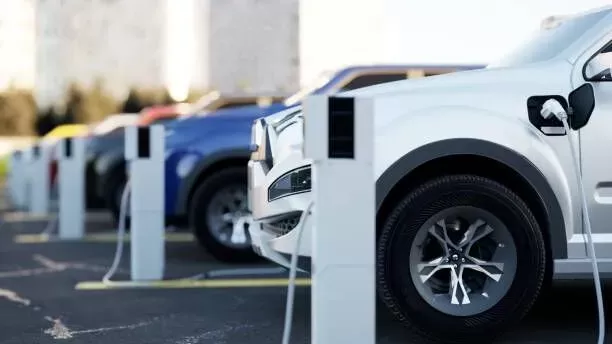Notifications

5 minutes, 27 seconds
-120 Views 0 Comments 0 Likes 0 Reviews

As electric vehicles (EVs) continue to gain popularity, many drivers are curious about how their maintenance compares to traditional internal combustion engine (ICE) vehicles. While EVs are often praised for lower maintenance needs, they still require regular care to ensure optimal performance and longevity.
This guide explores the essential maintenance tasks for electric vehicles—from battery care to tire rotations—and highlights key differences between EV and ICE vehicle upkeep.
Electric car maintenance includes a mix of familiar tasks shared with ICE vehicles and EV-specific responsibilities. While EVs have fewer moving parts and don’t need oil changes or exhaust repairs, they still demand attention to components like tires, brakes, and cooling systems.
Below is a breakdown of essential DC EV Charger maintenance tasks:
The battery is the heart of an electric vehicle. According to the U.S. National Renewable Energy Laboratory (NREL), modern EV batteries are expected to last between 12 and 15 years in moderate climates, or 8 to 12 years in extreme temperature environments.
Avoid Extreme Temperatures: Park in garages or shaded areas to minimize battery degradation.
Maintain Optimal Charge Levels: Keep battery levels between 20% and 80% for everyday use.
Use Fast Charging Sparingly: Rely on Level 2 chargers for regular charging to reduce battery stress.
Stay Updated: Install software updates to improve battery performance and longevity.
EVs use regenerative braking to convert kinetic energy into electricity, reducing wear on brake pads. However, traditional braking systems are still present and need routine care.
Follow the manufacturer's brake service schedule.
Check and replace brake fluid as needed.
Watch for changes in brake responsiveness or noise.
EVs rely on liquid cooling systems to regulate battery temperature—especially important during charging or heavy use.
Inspect for leaks or damage.
Check and top up coolant levels regularly.
Keep the cooling system clean for proper airflow.
Due to higher torque and heavier battery weight, EVs can wear out tires faster than ICE vehicles.
Check Tire Pressure every few weeks to maintain efficiency and safety.
Rotate Tires as recommended to promote even wear.
Inspect Tread Depth regularly; replace tires if worn.
Schedule periodic wheel alignments to prevent uneven wear.
The cabin air filter keeps the air inside your EV clean by capturing dust, pollen, and pollutants.
Replace every 12,000 to 15,000 miles, or more often in dusty environments.
A clean filter improves HVAC performance and air quality.
Windshield clarity is essential in all weather. Wiper blades and fluid need regular attention.
Replace wiper blades every 6 months or when streaking occurs.
Use de-icing washer fluid in winter.
Keep the windshield clean to extend blade life.
EVs frequently receive over-the-air updates that improve features and fix bugs. Always install updates promptly.
Inspect your home EV charger for signs of wear or damage. Keep the charging port clean and dry.
Because EVs are heavier, the suspension system endures more stress. Have it inspected periodically, especially if you notice handling issues.
✅ Longer Vehicle Lifespan
Preventive care extends battery, brake, and tire life.
✅ Better Performance
A well-maintained EV operates more efficiently and offers improved range.
✅ Increased Safety
Routine checks reduce the risk of accidents caused by worn-out components.
✅ Cost Savings
Regular maintenance helps avoid expensive repairs in the long term.
Electric vehicles offer a more streamlined and cost-effective maintenance experience compared to ICE vehicles. By staying proactive with care—especially for the battery, tires, and software—you’ll enjoy smoother driving, longer vehicle life, and greater overall efficiency.
Whether you're a new EV owner or considering the switch, proper maintenance is key to a seamless and rewarding EV experience.
China EV Chargers EV Charger Manufacturer EV Charging Solutions

